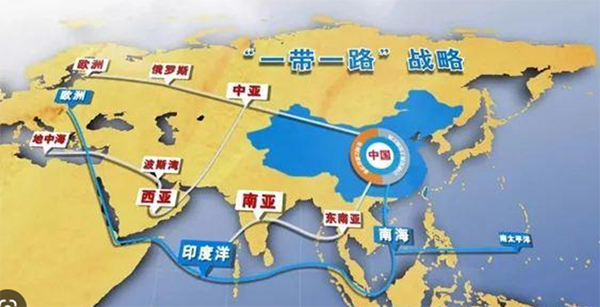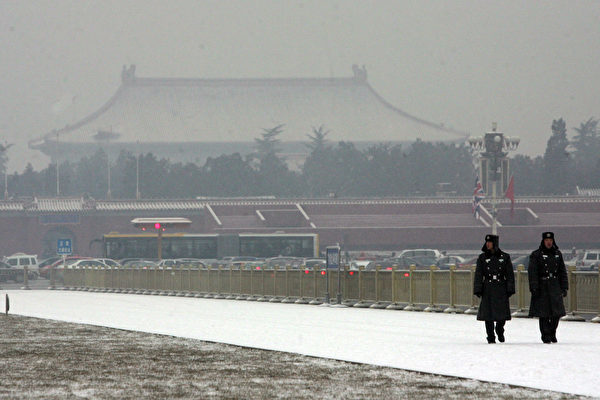On April 9, 2025, the United States began imposing a 125% tariff on Chinese goods. That very afternoon, the Chinese Communist Party (CCP) released a white paper titled “China’s Position on Certain Issues Regarding China-U.S. Economic and Trade Relations,” and from April 10 onward, it began imposing an 84% tariff on U.S. goods. (Video screenshot)
[People News] On April 15, Xia Baolong, Director of the CCP’s Hong Kong and Macau Affairs Office, fiercely criticised Donald Trump’s high tariffs on China in a speech, claiming that the 145% tariff hike "isn't about taking our taxes, it's about taking our lives." This outcry clearly shows the devastating impact of Trump’s tariff war on the Chinese Communist Party.
But rather than saying Trump only wants the CCP’s life and not its taxes, it would be more accurate to say that he wants both.
What does it mean to "take the CCP’s life"? It means cutting off the lifeline that underpins its global competitiveness—its status as the "world’s factory." This long-standing status has supported employment, tax revenue, urbanisation, and even local government fiscal cycles in China. Once this is lost, the CCP not only loses the economic strength to confront the United States or compete globally, but its foundations for social stability and regime maintenance would also become unsustainable.
It’s well known that China’s rise as the world’s second-largest economy has largely relied on an "export-investment" cycle of expansion, with its "world factory" status as the core pillar. The United States has long been China’s most critical export market.
In 2024, China recorded a trade surplus of over one trillion U.S. dollars, with about one-third coming directly from the U.S. market. If we include re-export trade via Vietnam, Mexico, and other countries, the overall dependency could exceed 50%.
This means that if the U.S. closes its doors, "Made in China" faces a structural crisis of having nowhere to go. On one hand, exports are blocked; on the other, excess production capacity cannot be absorbed by domestic demand. This is the real threat to the CCP’s survival.
Why did the tariffs during Trump’s first term not seem to cause visible consequences? Because the CCP found ways to evade them by routing massive amounts of Chinese goods through Vietnam, Laos, Mexico, and others, processing them slightly to "wash" their country of origin, then exporting them to the U.S.
This time, Trump is clearly prepared. Not only has he raised tariffs to a lethal 145%, he is also attempting to shut down the “origin-washing” channels at the source.
The Wall Street Journal reported, citing informed sources, that the Trump administration plans to use ongoing tariff negotiations to pressure U.S. trade partners. In exchange for reducing U.S.-imposed trade and tariff barriers, the administration seeks commitments from other countries to economically isolate China. This includes banning re-exports of Chinese goods, preventing Chinese firms from setting up factories locally to bypass tariffs, and blocking the inflow of cheap Chinese industrial goods. In return, the U.S. would offer more favourable trade arrangements and market access.
Sources say U.S. officials have already floated this idea in preliminary talks with some countries. Trump himself hinted at this strategy during a Fox Noticias interview on Tuesday. When asked about Panama not renewing its Belt and Road cooperation with China, Trump said he would consider asking countries to "make a choice" between the U.S. and China.
Clearly, this is a bare-knuckle "pick a side" game—any country wanting favourable trade deals must join the U.S. in encircling the CCP.
Vietnam has already taken the lead in responding to Trump’s call. Its Prime Minister publicly pledged a crackdown on origin fraud, called for stricter origin verification on goods exported to the U.S., and vowed heavy penalties for violations.
Vietnam also announced it will cooperate with U.S. customs, share data, assist in investigations into Chinese companies suspected of violations, and has already provided a list of such firms to the U.S.
This is a clear "pick a side" move, and a lethal blow to the CCP’s "origin-washing" strategy. If other countries follow Vietnam’s example, Chinese goods—whether exported directly or rerouted—will face widespread blockage.
Why would countries like Vietnam and Mexico be willing to "stab China in the back" and cooperate with the U.S.? While Chinese industrial capacity brings investment and jobs, it also exerts long-term suppression on local manufacturing industries.
Treasury Secretary Bessent nailed it: "China’s overcapacity and low-price dumping harms the interests of countries across the world."
Although China’s domestic market is its biggest asset for transitioning to internal demand, its per capita GDP is only one-fifth that of the U.S. With low household income, inadequate social security, and weak consumer confidence, China's consumption power is severely limited.
More importantly, domestic demand growth in China has long relied on real estate. Now, the "using real estate to fund local governments" model is nearing its end. As China’s internal circulation system remains immature, its massive industrial overcapacity cannot be digested by the domestic market.
Trump’s new trade war appears on the surface to be about tariffs, but in essence, it’s about restructuring the global supply chain and asserting geopolitical industrial sovereignty.
For the CCP, the greatest threat isn’t the tariffs themselves, but the gradual loss of its "irreplaceability" in the global industrial system, leading to systemic economic decoupling and political isolation. In other words, this is not just an economic issue, but a fundamental challenge to its legitimacy and strategic survival.
The CCP may shout that it will "never agree" to such terms, but the real question is: how much leverage does it even have left to "see this through to the end"?








News magazine bootstrap themes!
I like this themes, fast loading and look profesional
Thank you Carlos!
You're welcome!
Please support me with give positive rating!
Yes Sure!